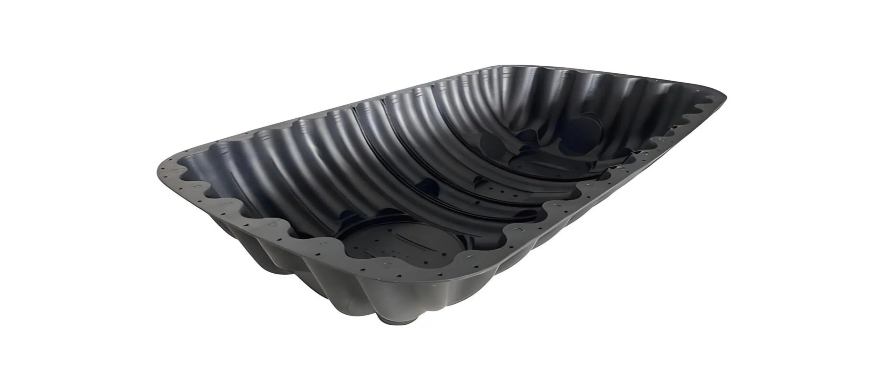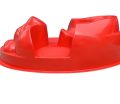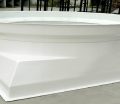
Choosing the right material for your boat is essential when it comes to sailing, as it directly impacts performance, durability, and overall experience. The debate between aluminum vs fiberglass boat sailing has been ongoing for years, with each material offering distinct advantages depending on your sailing needs. Aluminum boats are known for their lightweight and fuel-efficient properties, making them ideal for small-scale sailing, while fiberglass boats are favored for their stability and smooth ride in various water conditions. When considering aluminum vs fiberglass boat sailing, it’s crucial to evaluate factors such as the cost of maintenance, durability over time, and their suitability for specific environments, like saltwater conditions. Each material comes with its own set of pros and cons that will be explored in this article to help you make an informed decision based on your preferences and budget.
The Key of Aluminum vs Fiberglass Boat Sailing for Your Adventures
When it comes to aluminum vs fiberglass boat sailing, the decision can significantly shape your experience on the water. Each material offers unique advantages and challenges, catering to specific sailing environments and personal preferences. Below, we examine key aspects of both options to help you determine the best fit for your sailing needs.
Aluminum vs Fiberglass Boat Sailing: Price Breakdown
The price differences between aluminum and fiberglass boats are a crucial consideration for many sailors. Both initial and long-term costs should be evaluated to understand their overall value.
Aluminum boats are often more affordable upfront. Their simpler manufacturing process and lower material costs make them an attractive option for budget-conscious sailors.
Fiberglass boats generally have a higher initial price. However, this cost is often justified by their advanced designs, enhanced performance, and additional features.
Size and customization play a significant role in pricing. Larger boats or those with advanced hull designs typically cost more, whether made of aluminum or fiberglass.
Long-term costs also differ. Aluminum boats usually incur lower maintenance expenses, particularly in freshwater environments. Fiberglass boats, while requiring more upkeep, can offer better resale value due to their durability and design appeal.
Understanding these cost factors can help sailors balance their budget with their performance expectations and usage needs.
Aluminum vs Fiberglass Boat Sailing: Saltwater Challenges and Performance
Sailing in saltwater environments introduces unique challenges, and the material of your boat plays a significant role in its performance and maintenance needs.
Aluminum boats are prone to corrosion in saltwater, which requires regular protective measures such as anodes and specialized coatings. While these efforts can mitigate damage, they add to the maintenance routine.
Fiberglass boats are less affected by saltwater corrosion. Their non-metallic structure resists the chemical reactions that damage aluminum, making them a more durable option for extended saltwater use.
Performance in saltwater varies as well. Aluminum boats tend to be lighter, which can lead to greater agility in calm waters but may struggle in rougher conditions. Fiberglass boats, with their heavier weight and smoother hull designs, offer better stability and handling in challenging seas.
Considering your sailing environment and maintenance capacity is crucial when deciding between aluminum vs fiberglass boat sailing for saltwater adventures.
Aluminum vs Fiberglass Boat Sailing: Ownership Costs
The ongoing expenses of owning an aluminum vs fiberglass boat for sailing should not be overlooked. Maintenance, insurance, and potential repairs all contribute to the long-term cost of ownership.
Aluminum boats are relatively low-maintenance. Their resistance to dents and easy repair processes make them cost-effective over time. However, additional protective measures in saltwater environments can add to upkeep expenses.
Fiberglass boats require more frequent maintenance. Gelcoat care, cleaning, and occasional hull repairs are necessary to maintain their appearance and performance. These maintenance tasks can be more labor-intensive and costly.
Insurance costs may differ as well. Fiberglass boats, with their higher initial value and advanced features, may incur higher insurance premiums compared to aluminum models.
When considering the total cost of ownership, the choice depends on your willingness to invest time and resources into maintenance versus upfront savings.
Disadvantages of Fiberglass Boats
While fiberglass boats offer numerous benefits, they also come with some notable drawbacks that sailors should be aware of.
Cracking is a common issue in fiberglass boats. Over time, stress and impact can cause hairline cracks in the hull or deck, requiring professional repairs.
Repairing fiberglass is often more complex and expensive than fixing aluminum. Specialized materials and expertise are needed, which can add to downtime and costs.
Maintenance requirements for fiberglass boats are higher. Regular cleaning, polishing, and gelcoat care are necessary to prevent deterioration and maintain their aesthetic appeal.
The environmental impact of fiberglass production and disposal is a concern. Fiberglass manufacturing involves chemicals that can harm the environment, and disposing of old fiberglass boats presents challenges due to the material’s non-biodegradable nature.
Sailors must weigh these disadvantages against the performance and design benefits of fiberglass boats when making their choice.
Performance Factors in Aluminum vs Fiberglass Boat Sailing
Performance is a key factor in choosing between aluminum vs fiberglass boat sailing. Each material excels in different aspects of handling, stability, and adaptability.
Aluminum boats are known for their lightweight construction, which enhances agility and speed in calm waters. They are particularly effective for quick maneuvers and navigating tight spaces.
Fiberglass boats, with their heavier weight, provide superior stability and smoother rides in choppy waters. Their advanced hull designs often allow for better tracking and control at higher speeds.
Adaptability to various sailing conditions also varies. Aluminum boats perform well in shallow waters and areas with obstacles, while fiberglass boats are better suited for open seas and rough conditions.
Understanding your sailing environment and desired performance characteristics is crucial in making the right choice.
Deciding Between Aluminum vs Fiberglass Boat Sailing
Choosing between aluminum vs fiberglass boat sailing requires careful consideration of your sailing preferences, budget, and the environments you frequent. Aluminum boats offer affordability, lightweight agility, and ease of maintenance, making them ideal for calm waters and frequent transport. Fiberglass boats provide stability, advanced performance, and aesthetic appeal, excelling in rougher conditions and long-term durability.
Evaluating these factors will help you select the boat that best aligns with your needs, ensuring enjoyable and successful sailing experiences.
Fiberglass or Aluminum River Boat: Which Boat is Best for You
How About Aluminum vs Fiberglass Boat Sailing for Your Needs
Aluminum vs fiberglass boat sailing is a widely debated topic among boating enthusiasts, each material offering distinct advantages and challenges. The right choice depends on factors like usage patterns, environmental conditions, and long-term expectations. Below, we explore key aspects of aluminum and fiberglass boats in depth.
Aluminum vs Fiberglass Boat Sailing: Reddit Insights
The boating community on platforms like Reddit offers valuable real-world perspectives on aluminum vs fiberglass boat sailing. These insights, derived from personal experiences, shed light on performance, maintenance, and overall satisfaction.
Many aluminum boat owners praise their lightweight nature, which makes transportation and launching easier. These boats excel in shallow waters, where agility is essential. Enthusiasts often highlight aluminum’s durability against impacts, especially in rocky or debris-filled waters.
However, some users note aluminum’s tendency to produce noise during sailing. This aspect can affect the overall experience, particularly for those seeking a quiet ride. Insulating measures can mitigate this issue but may require additional effort.
Fiberglass boat owners frequently admire their sleek designs and superior stability in choppy waters. Comments often mention the smooth rides they offer, which make long sailing trips more enjoyable. However, concerns about higher maintenance and repair costs frequently surface, particularly when dealing with cracks or gelcoat wear.
These personal accounts provide practical insights for those weighing their options, helping new buyers anticipate both the joys and challenges of aluminum vs fiberglass boat sailing.
Aluminum vs Fiberglass Boat Sailing: Pros and Cons
Understanding the pros and cons of each material is essential for making an informed choice. Each has strengths and weaknesses suited to different sailing scenarios.
Advantages of Aluminum Boats
- Lightweight Construction: Aluminum boats are easy to handle and transport, making them an excellent choice for casual or frequent sailors.
- Durability: Aluminum is resistant to dents and scratches, ensuring longevity even in rugged environments.
- Corrosion Resistance: With proper coatings, aluminum performs well in both freshwater and saltwater.
- Low Maintenance: Repairs are straightforward, and maintenance costs are relatively low.
- Affordability: Aluminum boats are typically more budget-friendly, both in initial cost and upkeep.
Disadvantages of Aluminum Boats
- Noise Levels: Aluminum can amplify noise from water and vibrations, which may detract from the sailing experience.
- Aesthetic Limitations: Aluminum boats often lack the polished appearance of fiberglass models.
- Heat Retention: Aluminum surfaces can become hot under direct sunlight, requiring additional care during summer.
Advantages of Fiberglass Boats
- Sleek Design: Fiberglass boats feature smoother finishes and more attractive aesthetics, appealing to style-conscious buyers.
- Insulation: Fiberglass provides better sound and temperature insulation, enhancing onboard comfort.
- Stability: Their heavier build offers a stable ride in rough waters, ideal for open-sea sailing.
- Customization: Fiberglass allows for more complex hull shapes, optimizing performance.
Disadvantages of Fiberglass Boats
- Higher Costs: Both initial purchase and repairs for fiberglass boats tend to be more expensive.
- Prone to Cracks: Over time, stress can cause cracking, which requires skilled repairs.
- Maintenance Intensity: Routine cleaning and gelcoat upkeep are necessary to preserve their appearance.
This breakdown highlights the trade-offs involved in aluminum vs fiberglass boat sailing, helping sailors align their priorities with the material that best meets their needs.
Fiberglass vs Aluminum Duck Boat: Pros and Cons for Hunters
Aluminum vs Fiberglass Boat Sailing: Environmental Considerations
The environmental impact of boat materials is increasingly important to eco-conscious sailors. Both aluminum and fiberglass have unique sustainability aspects.
Aluminum is recyclable, which contributes to its environmental appeal. Boats made from aluminum can often be repurposed or recycled at the end of their lifecycle. Additionally, the production process has become more energy-efficient over time.
Fiberglass, while durable, poses disposal challenges. The material is not biodegradable, and recycling options remain limited. Efforts are being made to develop eco-friendly alternatives, but these are not yet widely available.
When choosing between aluminum vs fiberglass boat sailing, considering the environmental footprint of your vessel can be an essential part of the decision-making process.
Aluminum vs Fiberglass Boat Sailing: Long-Term Performance
Evaluating long-term performance is crucial for sailors who plan to use their boats regularly or in varied conditions.
Aluminum boats are highly adaptable. They handle minor impacts without significant damage and are less susceptible to warping or deterioration from prolonged use. This makes them ideal for casual use in freshwater or areas with rocky obstacles.
Fiberglass boats offer superior hydrodynamics, resulting in smoother and faster rides. Their design allows for better tracking and control, particularly at higher speeds or in open waters. However, prolonged exposure to UV rays or poor maintenance can lead to discoloration and weakening of the gelcoat.
Both materials have proven reliability, but the choice between them often hinges on specific performance needs and usage patterns.
Choosing Aluminum vs Fiberglass Boat Sailing for Beginners
For newcomers to sailing, the decision between aluminum and fiberglass often boils down to ease of use, maintenance, and initial investment.
Aluminum boats are generally more forgiving for beginners. Their durability and resistance to damage make them less intimidating for those learning to sail or navigate challenging waters. Maintenance is straightforward, with few specialized skills required.
Fiberglass boats, while offering enhanced comfort and aesthetics, demand more attention to upkeep. Beginners who prioritize performance and long-term value may still find them worthwhile, provided they are prepared for the associated maintenance.
New sailors should carefully consider their priorities and seek advice from experienced boaters to make an informed decision.
Balancing Aluminum vs Fiberglass Boat Sailing
Choosing between aluminum vs fiberglass boat sailing depends on a careful evaluation of your sailing goals, preferred environments, and budget. Aluminum boats excel in affordability, durability, and ease of maintenance, making them ideal for casual use or rocky terrains. Fiberglass boats shine in aesthetics, comfort, and performance, particularly in challenging seas or for those seeking a more refined experience.
Each material brings unique advantages to the water, ensuring that sailors can find the perfect vessel to suit their needs. With these insights, you’re well-equipped to make a confident choice that enhances your sailing adventures.
Affordable Fiberglass Paddle Boat with Aluminum Pontoons
FAQs about Aluminum Vs Fiberglass Boat Sailing
Aluminum sailboats are considered a great option for those who want a durable and low-maintenance boat, especially for long-distance cruising or offshore sailing. Aluminum’s lightweight nature makes it easier to handle, and its resistance to rust or corrosion is particularly valuable in saltwater environments. Additionally, aluminum sailboats can be welded, offering flexibility for repairs and modifications. However, aluminum boats can be noisier compared to fiberglass, especially when cutting through waves, and they may have a more industrial appearance. While aluminum sailboats might not have the sleek finish of fiberglass boats, their durability and ease of repair make them a solid choice for adventurous sailors. Fiberglass, on the other hand, offers better insulation against heat and noise, which could be preferred for longer trips. Ultimately, the decision to choose aluminum or fiberglass for a sailboat depends on factors like durability, desired aesthetics, and how often you plan to use it in various water conditions.
Although aluminum boats offer a variety of advantages, there are a few drawbacks to consider. One significant downside is their susceptibility to corrosion, particularly in saltwater environments. If not properly maintained, aluminum can corrode and weaken over time, especially around rivets and seams. Aluminum boats are also generally noisier compared to fiberglass models, as the metal hull amplifies the sound of water hitting it. This can be distracting when fishing or during quiet, calm days on the water. Additionally, while aluminum is lightweight and easy to maneuver, it also offers less stability in choppy waters compared to heavier fiberglass boats. Though they are durable and resistant to impact, aluminum boats may get dented rather than cracked, and repairing them can be more challenging if the damage is significant. Finally, while generally more affordable, aluminum boats may not have the same level of aesthetic appeal as fiberglass boats, which often come with smoother finishes and more design options.
Fiberglass boats offer numerous benefits, but they do come with some drawbacks. One of the main disadvantages is their higher cost, both in terms of initial purchase price and ongoing maintenance. Fiberglass boats are typically more expensive than aluminum ones, and repairs can be costly, particularly if the hull becomes cracked or damaged. The material is more brittle than aluminum, and while it provides a smooth, stable ride, it is more prone to damage from impacts. Another issue is the weight—fiberglass boats are significantly heavier than aluminum boats, making them harder to transport and maneuver. This can also put more strain on the engine, affecting fuel efficiency. Additionally, fiberglass requires more maintenance than aluminum, including regular cleaning, waxing, and gel-coating to keep the surface smooth and protected from environmental factors. Finally, fiberglass boats can be more challenging to repair, as specialized tools and materials may be needed for any significant damage, increasing repair costs and time.

As the editor of GangLong Fiberglass, I have years of experience and in-depth research, focusing on cable tray products, fiberglass solutions, and grille systems. I incorporate years of industry insights and practical experience into every content, committed to promoting the progress of the industry. At GangLong Fiberglass, my commitment is reflected in every product, from innovative cable trays to durable fiberglass solutions and sturdy grille systems. As an authoritative voice in the industry, my goal is to provide valuable information to professionals and businesses and promote forward-looking solutions.


